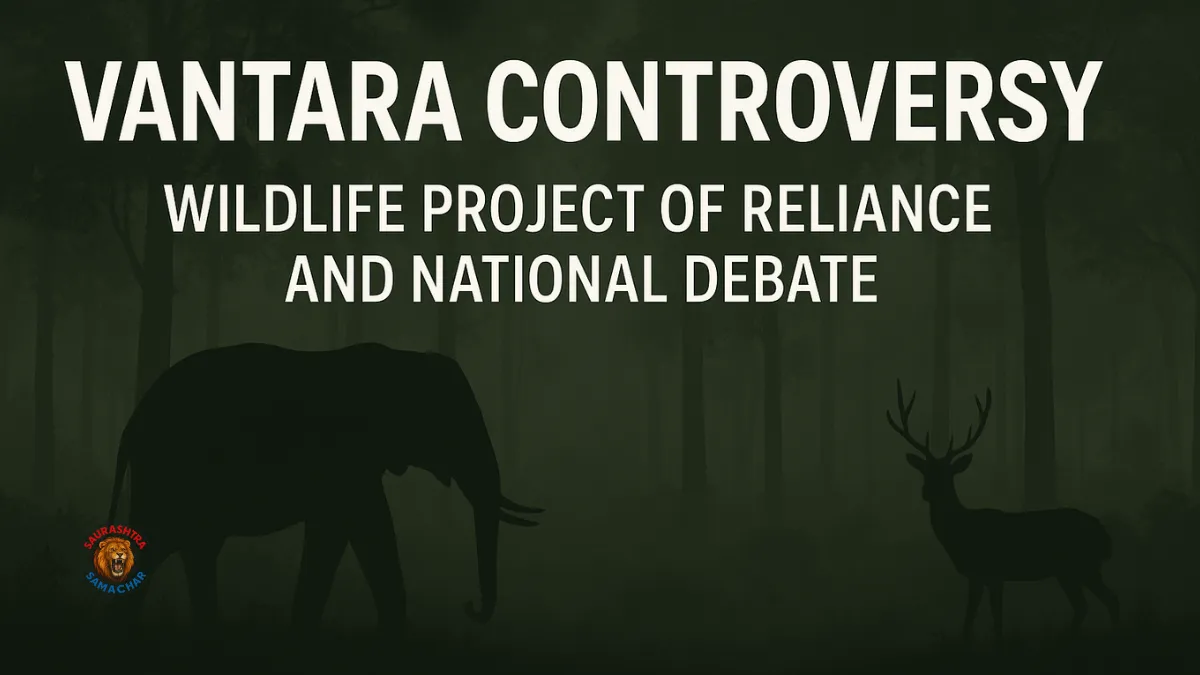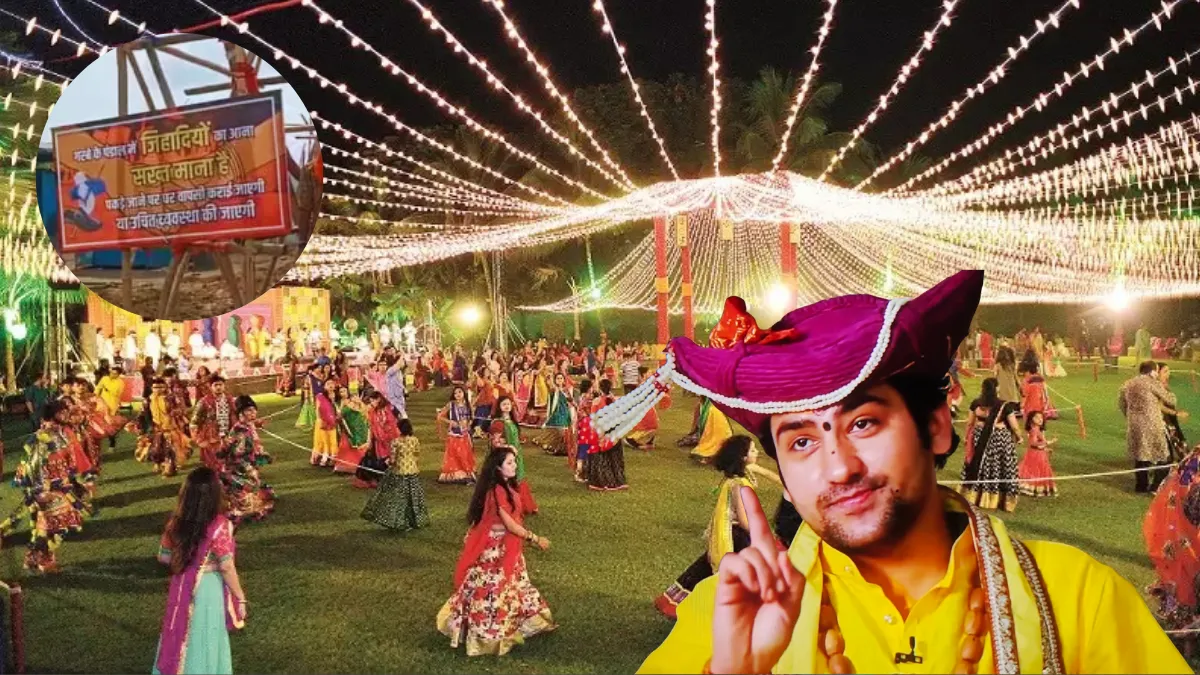Vantara controversy has emerged as one of the most talked-about issues in recent times, involving wildlife conservation, corporate involvement, and local sentiments. Reliance Foundation’s ambitious wildlife rescue and rehabilitation project in Jamnagar, Gujarat, known as Vantara, was designed to provide shelter to injured, rescued, and abandoned animals. However, instead of being celebrated as a landmark conservation effort, the initiative has sparked protests, legal debates, and emotional responses from several communities across India.
This article explores the details of the Vantara controversy, its background, the arguments for and against the project, and why it has become a matter of national discussion.
What is Vantara?
Vantara, meaning “Star of the Forest,” is a vast wildlife rescue, care, and rehabilitation center spread across thousands of acres in Jamnagar, Gujarat. Launched by Reliance Foundation, the project claims to provide world-class facilities for animals rescued from circuses, illegal captivity, and distress situations.
With high-end veterinary care, specialized enclosures, and trained staff, Vantara is positioned as one of the largest animal rescue initiatives in the world. But despite these intentions, its operations have triggered controversy.
Why the Vantara Controversy Began
The Vantara controversy became prominent in early 2025 when concerns were raised over the transfer of elephants and other animals from temples, mutts, and sanctuaries across India to Jamnagar.
Some key reasons behind the controversy include:
- Religious and Cultural Sentiments – Communities, including Jain and Hindu groups, protested the relocation of elephants that were considered sacred or part of religious traditions.
- Ownership Rights – Several states and local trusts claimed that animals were taken without proper approvals or against traditional custodianship.
- Conservation Concerns – Critics argued that concentrating animals in one location, no matter how advanced, contradicts the principle of keeping wildlife in their natural habitat.
- Corporate Involvement – Skeptics questioned why a private corporate entity should be entrusted with such large-scale wildlife care instead of government-led institutions.
Major Incidents That Fueled the Vantara Controversy
The controversy escalated with multiple incidents reported in different states:
- The Madhuri Elephant Row: Protests erupted when “Madhuri,” a well-known elephant from Nandini Mutt in Maharashtra, was moved to Vantara. Jain communities in Lucknow and other cities demanded her return, staging dharnas and submitting petitions to authorities.
- White Bear from Chhattisgarh: Wildlife enthusiasts and NGOs in Chhattisgarh demanded the return of a rare white bear and deer reportedly transferred to Jamnagar, calling it an unfair relocation of regional biodiversity.
- Supreme Court Intervention: The growing national debate led the Supreme Court of India to form a Special Investigation Team (SIT) in August 2025 to look into the operations, legality, and transparency of Vantara’s activities.
Arguments in Support of Vantara
While the Vantara controversy highlights opposition, there are also strong voices supporting the project:
- Better Animal Care – Supporters argue that Vantara provides animals with advanced veterinary facilities, a healthier diet, and better living conditions compared to circuses, temples, or small sanctuaries.
- Rescue from Abuse – Many animals brought to Vantara were reportedly rescued from illegal captivity, exploitation, or poor treatment.
- Conservation Potential – With its scale and resources, Vantara could play a role in breeding programs and species preservation if managed transparently.
- International Recognition – Projects like this can place India on the global conservation map, attracting collaboration with experts and organizations.
Criticism and Opposition
Opponents of the project highlight different aspects of the Vantara controversy:
- Violation of Local Rights – Communities feel alienated when animals traditionally associated with their culture are moved without consent.
- Legal Gray Areas – Questions remain about whether proper approvals were obtained for large-scale relocations.
- Monopoly Concerns – Critics worry that allowing a single private organization to control such a vast number of wildlife species may set a dangerous precedent.
- Lack of Transparency – Limited public access and information about the conditions at Vantara have raised suspicions.
Vantara Controversy: Key Details at a Glance
| Aspect | Details |
|---|---|
| Project Name | Vantara |
| Location | Jamnagar, Gujarat |
| Initiated By | Reliance Foundation |
| Purpose | Wildlife rescue, care, and rehabilitation |
| Controversy Trigger | Transfer of elephants and rare animals from temples, mutts, and states |
| Key Incidents | Madhuri elephant row, white bear transfer from Chhattisgarh |
| Supporters’ Claim | Better animal care, rescue from abuse, conservation potential |
| Opponents’ Claim | Violation of local rights, legal issues, cultural sentiments ignored |
| Current Status (Aug 2025) | SIT formed by Supreme Court to investigate operations |
The Role of Government and Judiciary
The Indian government and judiciary are now central players in resolving the Vantara controversy. With the Supreme Court’s SIT in place, a transparent investigation is expected to determine whether the project complies with legal and ethical standards. State governments are also pushing for the return of animals they claim were taken without due permission.
The Ministry of Environment, Forest and Climate Change (MoEFCC) is under pressure to ensure that India’s wildlife protection laws are not bypassed, even for large-scale philanthropic projects.
Also read: SIT on Vantara Holds First Meeting: Roles, Responsibilities, and Key Issues Discussed
What Lies Ahead?
The future of the Vantara controversy depends on several factors:
- Findings of the SIT investigation
- Responses from state governments and local communities
- Possible reforms in wildlife relocation laws
- Public opinion shaped by media coverage and activism
If Vantara is able to address transparency issues and involve local communities in decision-making, it may still emerge as a model of conservation. However, if the allegations of overreach and rights violations hold true, it could become a cautionary tale of corporate dominance in the name of wildlife protection.
Also read: Vantara News: Chhattisgarh Demands Return of Rare Wildlife Amid Growing Controversy
Conclusion
The Vantara controversy is not just about one project in Jamnagar—it represents a larger debate about the intersection of wildlife conservation, cultural traditions, legal frameworks, and corporate influence. While Reliance Foundation’s intentions may be to provide better care for animals, the lack of consensus and allegations of forceful relocation have overshadowed its achievements.
As the Supreme Court’s SIT proceeds with its inquiry, the coming months will decide whether Vantara becomes a beacon of conservation or a symbol of conflict between communities, corporations, and the state.














